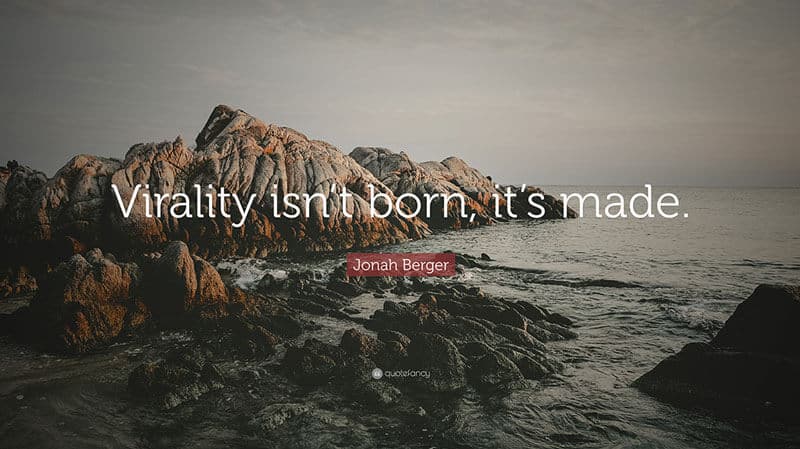
Pat Racco
Founder of Advantage Media
Jonah Berger: «The influencer marketing is overrated.»
We met Jonah Berger, among the “dads” of what we now call viral marketing. In this short post, some valuable brand pieces of advice, from emotions to negative word of mouth.
At the World Business Forum, Ninja Marketing CEO Mirko Pallera interviewed Jonah Berger, the author of “Contagious”, the book in which he explains why an idea and a product are successful and spread.

What is the formula for creating contagious content?
According to Jonah Berger still today the word-of-mouth is very important. People are informed and let themselves be influenced by others.
Without realising it, as he explains in his new book “Invisible Influence”, and as he pointed out in his afternoon speech from the WOBI main stage, the behaviour of other people has a significant influence on everything we do, in the decisions we make, from what we buy, to the careers we choose, to what we eat.
Companies spend too much money on influencer marketing
We have the conviction that to create influence we must find people who have a lot of followers because these people have an effect on the behaviour of others.
But in fact, this reasoning is wrong: even if companies spend a lot of money on influencer marketing, this does not always have an impact on people’s lives.
As explained by the sociologist Duncan Watts, it is possible to find an interesting analogy between a social epidemic and forest fires: “Some fires are larger than others, but no one would ever claim that their size depends on the exceptional characteristics of the spark that triggered. Big fires are not triggered by great sparks; for the fire to spread, many individual trees must catch fire and contribute to the propagation of the flames”.
What is the invisible influence
People says Berger, are often more influenced by the people around them, by friends, by their family, who they are more likely to believe more than what they see online. And in this sense, we speak of invisible influence.
It is not enough to rely on influencer marketing as the only and exclusive tool to spread the social contagion for your brand and product.
Instead, it is necessary to focus on the content and on what Mirko Pallera in his book “Create!” defines “Viral-DNA”, that is the ability of that content to ride a psycho-social tension and to trigger emotions: these are ultimately driving the sharing of content and therefore their dissemination.
After analysing more than seven thousand articles in the New York Times, in a pilot project, Jonah Berger said that he could better understand what content was shared more and, above all, why. At the base, there was precisely the emotion.
The secret of viral content is emotions
It is not just a matter of provoking positive or negative emotions in people, but of being able to touch those emotions, those passions, ready to trigger something in people.
As in a sort of catharsis, – as Mirko explains – it is these emotions that generate a reaction, move something, leading people to want to “resolve” in some way that emotion and then to share.
Anger, as well as wonder or fear, push us to action and then to sharing. “Just like when you hear someone shouting on the street, and this drives you to run, so too the contents have the same effect on our emotions and our reactions, leading us to share”.
Beware, says Berger: it is emotions that generate excitement to be viral. Sadness and fulfilment, for example, are emotions that do not encourage sharing, while anger, anxiety and wonder yes.
Advice to brands: how to nurture sharing
As for brands, Berger explained, it is essential not only to create an incentive to share but also to build a context around the brand, so that this stimulus can always be visible. Even the background, in fact, allows us to think about what we are sharing: the brand must be somehow “activated in people’s head by something around it and remember to do that action (sharing)”.
Likewise, even the stories we create around the brand must be like a Trojan horse and contain the message that the brand wants to spread and convey, and have a link with the brand.
Marketers must take this into account: risk is to create content, an empty story and disconnected from the brand, which does not communicate anything to people.

A new frontier: negative word of mouth
Finally, Jonah explained that even negative word of mouth is useful for brands, in fact, it can be an opportunity for companies, first of all, to solve a problem of the brand and then to build trust by fixing this problem and create new relationships with customers.
How to create contagious content and products, then?
Influencer marketing is probably not the right answer, or at least it’s not the way we’ve been used to thinking about the power of influence over people.
Without the right content and the correct link between content and brand, no influencer marketing campaign, not even the most expensive, can bring real and lasting results.
